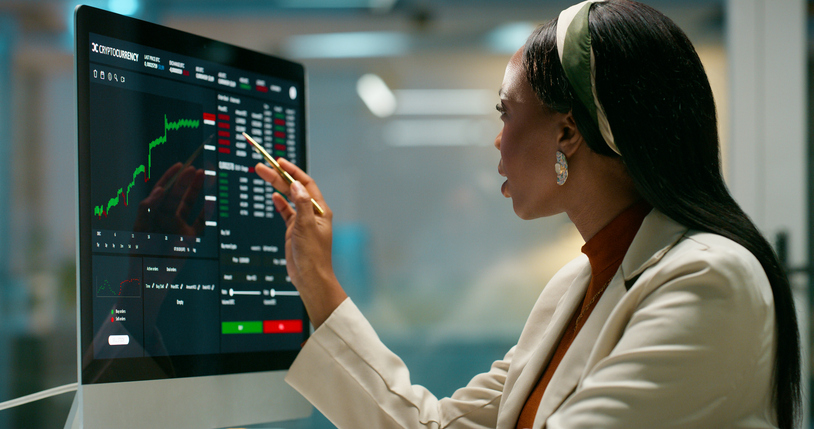When to Hold a Winning Stock Pick
Don't be afraid to stick with a good stock for the long haul.
Editor's Note: This story has been updated since its original publication in the June 2011 issue of Kiplinger's Personal Finance magazine.
As value investors, we have plenty of excuses when a stock we've sold for a hefty gain continues to march higher. We tell ourselves, "We'll leave the higher-risk gains to others," or "Nobody ever went out of business making money." Both of those maxims may be true, but it still hurts to sell too early.
The topic comes to mind as we watch the shares of Shutterfly (symbol SFLY), a leading online seller of photo prints and customized photo albums and stationery. Its stock has exploded since September, when Mario Cibelli, of Marathon Partners, recommended it in our newsletter Value Investor Insight. He viewed the shares, then at $26.50, as cheap based on his view that Shutterfly was shaping up to be the leader in a young business poised for explosive growth. He figured that the stock could hit $63 in four or five years.
From just $107.88 $24.99 for Kiplinger Personal Finance
Become a smarter, better informed investor. Subscribe from just $107.88 $24.99, plus get up to 4 Special Issues

Sign up for Kiplinger’s Free Newsletters
Profit and prosper with the best of expert advice on investing, taxes, retirement, personal finance and more - straight to your e-mail.
Profit and prosper with the best of expert advice - straight to your e-mail.
Big Move
As we write in early April, the stock has nearly doubled, to $52. In the interim, Shutterfly beat fourth-quarter earnings expectations and raised its estimate of 2011 sales growth to about 20%. It announced the acquisition of its largest competitor, Tiny Prints. In addition, says Cibelli, fears that social networks such as Facebook -- which store users' photos digitally -- would diminish demand for photos printed on paper have waned as Shutterfly has continued to grow.
Still, we'd certainly understand if Cibelli were to cash in some of his Shutterfly shares. At its current, elevated price, isn't the stock much riskier? And if momentum investors are jumping in, isn't it better to take profits before they jump out? What happens if a disappointing quarter dashes the higher expectations that are now built into Shutterfly's stock price?
Although Cibelli has considered such unhappy scenarios, he says he's standing firm on his decision. "This isn't true for all the stocks I own," he says, "but in more of a growth story like this, I don't just want to be a slave to the model."
Based on Cibelli's updated analysis, Shutterfly still looks cheap. For example, Cibelli sees profit margins expanding as the firm grows and benefits from economies of scale. He now figures that capital spending will be closer to 5% of sales, rather than the 9% he'd previously expected. And he's boosted his forecast of annual sales growth from 15% to more than 20%. Even without building in the substantial gains Cibelli expects from the Tiny Prints deal, he predicts the stock will hit $110 in three to five years.
His conviction is bolstered by his knowledge of Shutterfly's business. Says Cibelli: "We've done so much work on the company and the business that we have a very high level of conviction that four or five years from now, Shutterfly will be a substantially bigger and more profitable company than it is today. When we have that kind of conviction, we're less sensitive to short-term swings in the stock price."
Cibelli recommended the shares of Netflix (NFLX) to us at a price of $28 in October 2006. The stock is now $235. (Note: A hedge fund managed by Tilson had been short Netflix -- a bet on the stock falling in price -- but the fund closed its short position in early 2011.) So we asked Cibelli how his experience with the video-rental firm informs his thinking about Shutterfly. One relevant lesson, he says, is that you should be conservative in making estimates but be open to the possibility that your expectations for a company will prove to be way too low. And know that even if you are right about the story over the long term, the stock will be volatile.
The takeaway: Don't be afraid to hold your position until the future you envision materializes. In the case of Netflix, Cibelli did hold on to some shares all the way through the first quarter of 2011. But he originally started selling at a price of about $50. "We hope to handle that better with Shutterfly," he says.
Columnists Whitney Tilson and John Heins co-edit Value Investor Insight and SuperInvestor Insight.
Profit and prosper with the best of Kiplinger's advice on investing, taxes, retirement, personal finance and much more. Delivered daily. Enter your email in the box and click Sign Me Up.

-
 7 Hybrid Adviser Services, Reviewed
7 Hybrid Adviser Services, ReviewedThese hybrid adviser services aim for a sweet spot that combines digital investing with a human touch.
-
 If You'd Put $1,000 Into UPS Stock 20 Years Ago, Here's What You'd Have Today
If You'd Put $1,000 Into UPS Stock 20 Years Ago, Here's What You'd Have TodayUnited Parcel Service stock has been a massive long-term laggard.
-
 5 Ways Trump Could Impact Your Portfolio This Year
5 Ways Trump Could Impact Your Portfolio This YearInvestors are facing a changing landscape this year, from lower interest rates to a massive tax and spending bill. Here's how to prepare your portfolio.
-
The Case for Old Technology Companies
investing Many investors chase hot trends, but bargain hunters seek established companies with shares that are easier to value and sell on discount.
-
Why Value Investing Is Hard
investing Successful bargain hunters must brave going against the crowd and, at times, looking foolish.
-
Evaluating Two Real-Estate Companies
investing The potential for Howard Hughes's properties is huge, and its stock is cheap. But St. Joe Company has little value, and its shares are too expensive.
-
Foreign Stocks on Sale
Foreign Stocks & Emerging Markets Investing in overseas companies has gotten easier and can help diversify your portfolio. But risks still remain in some areas.
-
The Value of Shareholder Activism
investing Vocal and aggressive investors play a critical role in holding management teams accountable.
-
Microsoft Versus Apple
investing With Microsoft, expectations are so low that it's far more likely to deliver pleasant surprises.
-
Why Microsoft Is a Smarter Investment Than Apple These Days
investing Apple is just not cheap enough for us to take the risk that its long string of successes will remain unbroken.
-
A Look at Buffett's Heir
investing One disagreement between us and Todd Combs: his failure to own Berkshire Hathaway itself.

